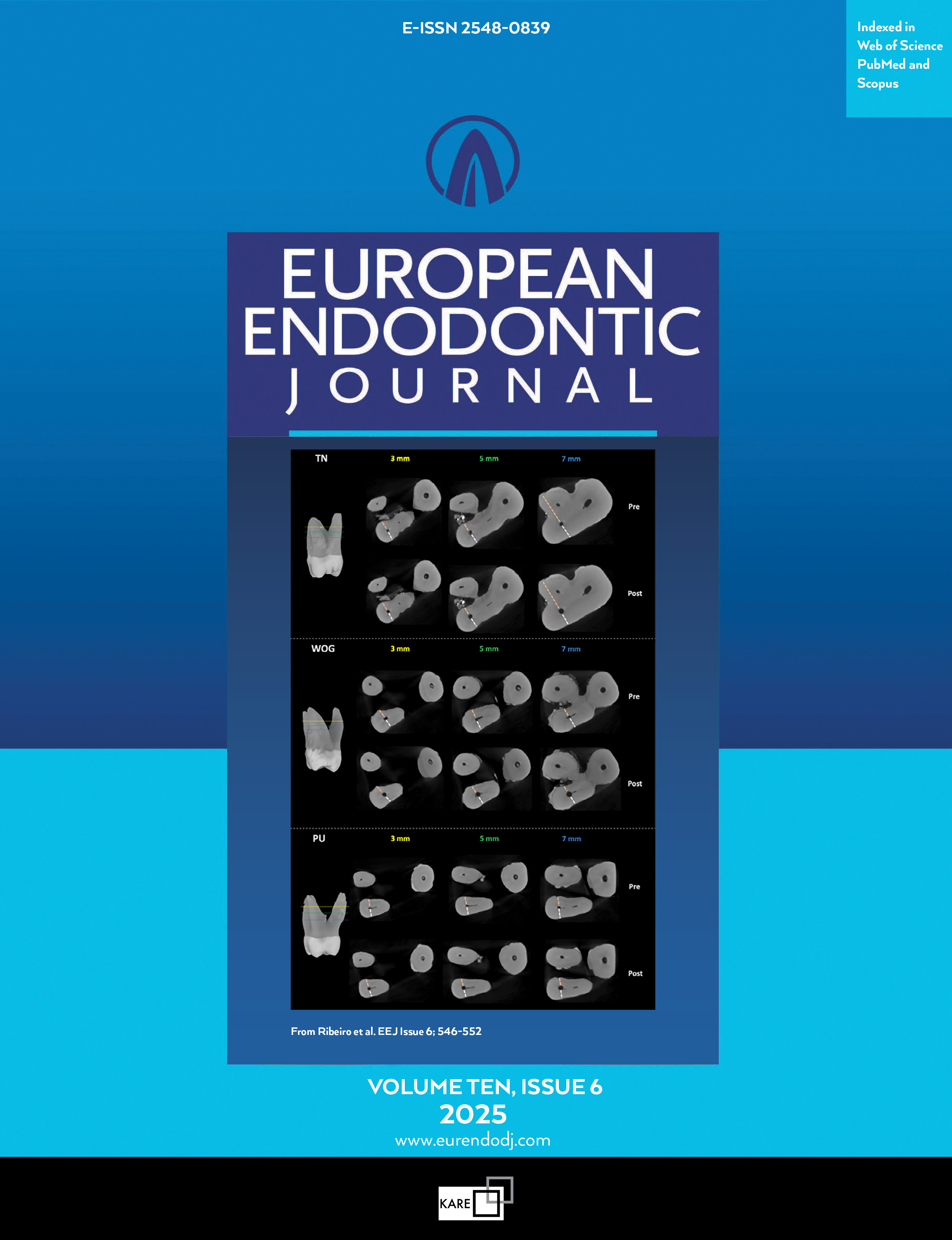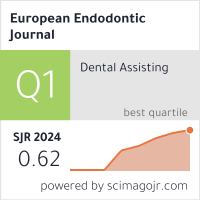Metrics
2024 IMPACT FACTOR
5 year Impact Factor
Eigenfactor Score
2024 CiteScore
Journal Citation Reports
(Clarivate 2025, JIF Rank)
Forensic Identification of Endodontically Treated Teeth after Heat-Induced Alterations: An In Vitro Study
Aashray Patel1, Vaishali Parekh1, Niraj Kinariwala1, Abraham Johnson2, Mona Somani11Department of Conservative Dentistry and Endodontics, Karnavati School of Dentistry, Gujarat, India2Department of Forensic Odontology, School of Forensic Science, National Forensic Sciences University, Gujarat, India
Objective: The study aimed to highlight the relationship between forensic science and endodontics by illustrating CBCT records can be used as legal evidence for forensic analysis and evaluate the effect of elevated temperature on the endodontically treated teeth.
Methods: The present study was conducted on 40 extracted permanent mandibular premolars, which were divided into two groups based on predetermined incineration temperature: Group I - 400°C & Group II - 800°C subjected for 15 minutes holding time in a digital burnout furnace. The root canal treatment was performed for both the groups and a Pre-incineration CBCT scan was taken for both the groups as an ante-mortem data. Following heating analysis, root canal treated teeth were examined using a stereomicroscope at 20x resolution to evaluate the morphological changes. The post-incineration CBCT scan was taken as the post-mortem record for each group. Both ante-mortem records and post-mortem records were compared for the forensic analysis.
Results: The endodontically treated teeth display a series of macroscopic and stereo-microscopic changes for each temperature scale. The CBCT records identify the thermal stress-induced 3D alterations in the gutta-percha filled teeth.
Conclusion: Knowledge of changes in human dentition and traces of the endodontically treated teeth can help forensic experts for the identification of the fire victims. (EEJ-2020-06-167)
Keywords: Cone-beam computed tomography, forensic dentistry, forensic identification, incineration, root canal therapy, stereomicroscope
Manuscript Language: English
(1011 downloaded)



